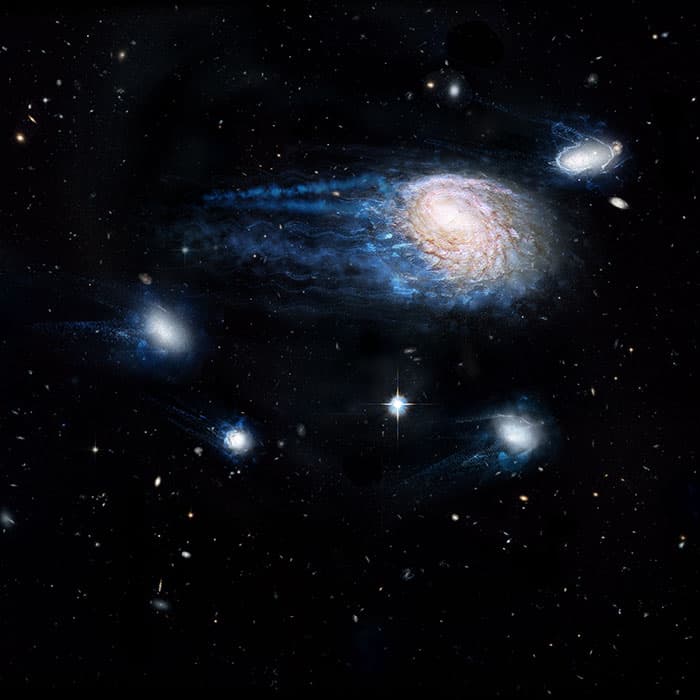Flash Physics is our daily pick of the latest need-to-know developments from the global physics community selected by Physics World‘s team of editors and reporters

Huge wave spotted in the atmosphere of Venus
A large standing wave has been observed by the Japanese orbiter Akatsuki in the upper atmosphere of Venus. By imaging the planet in infrared and ultraviolet, the bow-shaped feature was seen to be more than 10,000 km long and was hotter than the surrounding atmosphere. The phenomenon is unusual because Venus’s dense atmosphere typically circulates the planet in just four Earth days – much faster than the planet’s 243 day rotation. Yet the wave remained in a fixed position for at least four days while background winds continued to speed by at 100 m/s. Makota Taguchi and colleagues report in Nature Geoscience that the wave occurred above a mountainous region about the size of Africa called Aphrodite Terra. Supported by simulations, they suggest that the uneven ground generated a gravity wave (not a gravitational wave) in the lower atmosphere that then propagated upwards. Gravity waves occur when the wind pushes air upwards because of the ground topography, yet gravity pulls the air particles downwards. Previously, scientists had thought these waves could not propagate to the upper atmosphere on Venus, yet these results suggest otherwise. While the surface or lower atmosphere conditions that caused the stationary bow are as yet unknown, the finding could lead to a better understanding of what’s going on in Venus’s atmosphere.
Why some galaxies meet an early death

Galaxies are being stripped of their star-forming material, leading to their early deaths. A study led by Toby Brown from the International Centre for Radio Astronomy Research and Swinburne University of Technology in Australia suggests that a process called “ram-pressure stripping” is more dominant than previously thought. Galaxies consist of vast amounts of stars and gas, surrounded by a huge dark-matter halo – all held together by gravity. Star formation within a galaxy is fuelled by hydrogen gas, yet there are many processes that stop it. These dictate the lifetime of the galaxy because once existing stars cool and grow old, there is no fuel to create new stars and the galaxy dies. Ram-pressure stripping is one such life-limiting process and is related to a galaxy’s dark-matter halo. Haloes are enormous and can stretch across galaxy clusters, changing how the galaxies interact and move because of their huge gravitational forces. As galaxies fall to the centre of their clusters, passing through halos, the super-heated intergalactic plasma sweeps the gas from the galaxies. This is ram-pressure stripping and, on a cosmic scale, it acts very fast. While previous studies have shown the process acts on large galaxy clusters with massive dark-matter halos, Brown explains that “this paper demonstrates that the same process is operating in much smaller groups of just a few galaxies together with much less dark matter.” The study, published in Monthly Notices of the Royal Astronomical Society, looked at 10,600 galaxies and could help to solve other galaxy-evolution mysteries.
China completes free-electron laser facility
Researchers in China have announced the completion of a new free-electron laser (FEL) that can produce ultraviolet light. The Dalian Coherent Light Source (DCLS) cost around $20m to construct and is located at the Chinese Academy of Sciences Dalian Institute of Chemical Physics in Liaoning Province. FELs involve accelerating electrons in a linear accelerator and then passing them through “undulators” so they give off photons. Most work in the X-ray regime, such as the Linac Coherent Light Source at the SLAC National Accelerator Laboratory in Stanford, US, as well as the upcoming European X-ray Free Electron Laser, which is under construction near Hamburg, Germany. Yet the team behind the DCLS says that it can deliver light in an energy range from 8–4 eV and is the world’s brightest in this part of the electromagnetic spectrum, known as the vacuum ultraviolet (VUV). The researchers say that the facility will be able to study molecules and atoms in gases, which is hard to do with conventional X-ray FELs. “VUV FEL light sources have wide applications in the study of basic energy science, chemistry, physics and atmospheric sciences,” says Xueming Yang from the Dalian Institute of Chemical Physics. “We expect that the new facility will become a new machine for important scientific discoveries and international scientific collaborations.”
- You can find all our daily Flash Physics posts in the website’s news section, as well as on Twitter and Facebook using #FlashPhysics. Tune in to physicsworld.com later today to read today’s extensive news story on cooling a drum using squeezed light.



